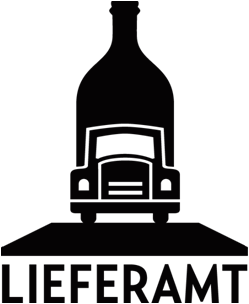
Duck with red cabbage
A friend of mine, who just happens to be French, told me that he never drinks red German wine. He says it is too sweet and lacks character. So, since I love a good challenge, I decided to see if I could change his mind.
The next time he came by I placed a bottle of 2011 Cabernet Sauvignon and Merlot blend by Thörle before him, but I removed the label. I think you can pretty much guess what happened next. He loved it, and I loved telling him it was German.
So this next pairing is a straight forward recipe for a pan seared duck breast with red cabbage. I like making sauces but here I decided not to make one. I love the sweet and sour red cabbage so much that I just sort of eat it together with the duck…. Like if the cabbage were a delicious chutney. And then there is the marvelous wine, to wash it all down of course. So for me, no sauce necessary. Don’t tell the French!
Ingredients
Serves 4
| 4 | duck breasts (each 180 grams) |
| 1 tbsp | olive oil |
| 1 | large red onion, peeled, halved and thinly sliced into half-moons |
| 1 | medium red cabbage, finely shredded (about 10 cups, loosely packed) |
| 4 tbsp | light brown sugar |
| 4 | apples, peeled, cored and sliced (1cm thick) |
| 1 1/2 cups | red wine |
| 1/2 cup | freshly squeezed orange juice |
| 1 1/2 tsp | allspice, or more as desired |
| salt and pepper | |
Method
Red cabbage:
Place a large heavy-bottom saucepan or casserole over medium-low heat, and add oil. When oil is hot, add onion and salt. Sauté gently until onion is (translucent)softened but not colored.
Add cabbage to pan on top of onion. Sprinkle sugar over cabbage; add wine, orange juice and allspice. Add the apples. Cover, and let mixture steam until cabbage is wilted, about 10 minutes.
Gently stir to mix all ingredients; cover and reduce heat to its lowest possible setting. Cook about 2 hours, and adjust salt and allspice as desired. Serve hot, or allow to cool to room temperature and refrigerate overnight if you are preparing a day ahead. It tastes better the next day.
For the Duck:
Pat the duck breast dry with paper towels. With a super sharp knife, carve a Crosshatch pattern in the skin, without piercing the meat.
Put the scored duck breast skin side down in a cold, dry sautée pan. Place the pan over medium-high heat. You want as much fat to render out as possible, so start with a cold pan.
Season the exposed side of the duck breast in the pan with salt and pepper. Let the duck cook until it pulls away easily from the pan without resistance. Most of the cooking time will take place with the skin side down. Oh, and it will splatter like mad but don’t cover the pan or you will trap in moisture and steam your duck, which can leave you with rubbery, overcooked meat. Just accept that the fact that there will be a bit of clean up afterward.
Flip the duck breast over and lightly sprinkle the skin with salt immediately. The salt will dissolve into the skin. It will be perfectly seasoned and totally yummy. Promise!
You can serve the duck and red cabbage with roasted potatoes, klösse (German potato dumplings)…. Or what ever tickles your fancy. As mentioned, I normally don’t make a sauce for this dish but if you prefer to make a pan sauce, knock yourself out.
I like my duck breast medium rare (internal temperature 136 °C / 58 °F). So how long should you cook your duck breast? You can use a meat thermometer to measure the internal temperature of the duck breast. For cooking times and temperatures, check out the charts times below:
| duck breast size | skin side down | flesh side down |
| small | approx. 2-3 minutes | approx. 2 minutes |
| medium | approx. 3-5 minutes | approx. 4 minutes |
| large | approx. 6-8 minutes | approx. 5 minutes |
| doneness | internal temperature | |
| rare | 125 °F / 54 °C | |
| medium-rare | 136 °F / 58 °C | |
| medium | 144 °F / 62 °C | |
| medium-well | 149 °F / 65 °C | |
| well | 158 °F / 70 °C |
Background Music: Fairytale of New York by The Pogues
and Kirsty MacColl
Aroma
Profil
-
blackberry
-
black currant
-
chocolate
-
pipe tobacco
-
cedar



























